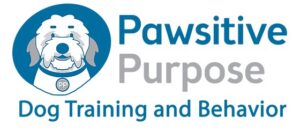Pets and Their People Blog
Why We Should Think Twice About How We Are Training Our (Service) Dogs
Service dogs have up to two years of training under their belt. This is so they can be prepared for doing their very important job for their handler. With all that training and the continued work they do throughout their lives, shouldn’t we be careful not to do anything to cause any medical problems or physical issues in the future if we can prevent it?
Most people now know that dog collars can do harm to the dog’s neck so why are they still being used?
Let’s Take a Look at How the Collar Can Do Harm to the Dog’s Neck…
The cervical vertebrae are the only thing that holds their head up. It also houses the spinal cord. The spinal cord houses the nerves that go to all areas of the dog’s body. Any prolonged pulling or sudden force can cause temporary and possible permanent misalignment of the vertebrae.
This misalignment can impinge the nerves that go to the front legs, which can result in abnormal sensation or numbness in the forelimbs. Sudden force can also cause a whiplash-like injury.
Collars can cause or exacerbate many physical conditions. Pulling on the neck puts pressure on several different areas such as the trachea, possibly causing trachea collapse, the lymph nodes which can have negative effects on the lymphatic system, arteries and veins which can lower blood flow to the eyes and brain, and the thyroid gland which can cause issues with thyroid function.
Not to mention the skin and fur beneath the collar that can be bruised, show hair loss or if not fitted properly, can cut into the skin of the dog’s neck.
Knowing this, we should all take a hard look at the way we train dogs, especially service dogs, because they have jobs for most of their lives and have to perform certain duties daily.
Other Ways to Train Service Dogs
A lot of dogs are trained to constantly look up at their handler when walking in a heel position. So let’s take a look at that. Have you ever had to hold your head in a specific position for a long period of time? Did your neck get really sore? I’m going to guess it did. So what do you think it feels like to a dog who has to hold that head position all the time? Yes. It gets sore and causes the dog pain and discomfort. And a dog that is in pain, should not be working. So just training a dog to do this position, may not be a good thing for the dog’s cervical spine and can shorten the amount of time they can actually work for their handler.
So, as pet guardians, we should make sure that we consult a specialist when choosing how we train with animals, especially service, working, competition and show animals, to make sure what we do does not cause them unnecessary pain later in their lives. Maybe we should start thinking about the way we train something. Like, “Why is it so important for a dog to look up at us so often when walking? Maybe they don’t actually need to make eye contact with us all the time.”
I know that there may not be a way to prevent all injuries or future problems that a service dog may have. But we can research other ways to train the dog and make sure that what we do is not more than they need to do. Maybe we just train the dog to walk beside us and don’t worry about if they are looking straight ahead or constantly looking at us. It is definitely a start. And this is something that we all need to think about before teaching a dog a certain behavior.
About the Author

About the Pet Professional Guild (PPG) Assistance Animal Division
This volunteer committee includes a broad representation of pet professionals with a variety of skills and interests specific to assistance animals. We invite individuals and professional organizations interested in training, working with, and receiving support from animals who assist people in different ways to join PPG. Pet guardians can join for free, and as members will have access to additional pages on our website (along with some amazing vendor discounts). We look forward to welcoming you into an inclusive group that prioritizes humane treatment and welfare of both people and assistance animals!

